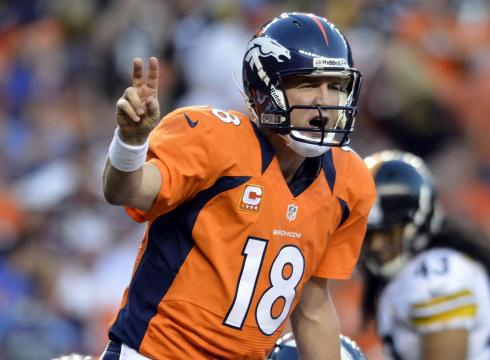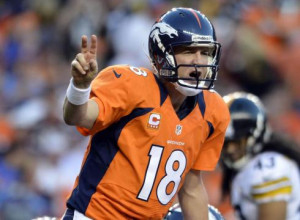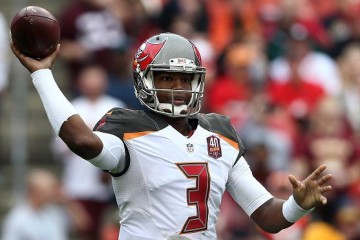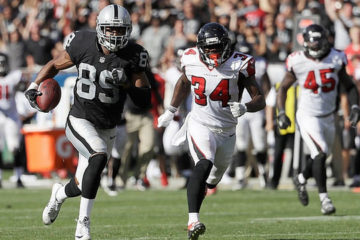2013 Fantasy Football: The Importance of Tiers


I have to admit, making tiers for your fantasy sports draft can be a real pain. For me, it involves a ton of research and a lot of nitpicking. But when it comes time to draft, tiers are crucial. They allow you to see the value left in the player pool at each position. Tiers are useful for both auction and snake drafts. In an auction, finding a great buy at a position such as a wide-receiver can help when you are looking to acquire an elite (and expensive) running back. To do a tier right, you have to be consistent with your thought process. Projecting what you expect from each player and position is important. Once your tiers are complete, you will now be able to develop a game plan for your draft.
Part of this game plan is understanding that the quarterback and wide-receiver positions are clustered when it comes to production this season. That isn’t to say there aren’t clear choices at the top, there are. Aaron Rodgers and Drew Brees are at the top of their quarterback class. And for receivers, Calvin Johnson is a cut above the rest. Of course there are risks and variations with all players, but we still have great options available throughout the draft at these positions. The same cannot be said for this year’s running backs, as the top producers at this position will be gone by the second round.
After Rodgers and Brees are taken in your draft, you can make a legitimate case for six different QBs to be the third name off the board. In my opinion, those are six Cam Newton, Peyton Manning, Matt Ryan, Tom Brady, Robert Griffen III, and Colin Kaepernick. Now, I may have two tiers that divide these six players, but essentially, they all carry massive fantasy upside. When you factor in health, age, and weapons, the safest bet may actually be Matt Ryan, but will he produce more fantasy points than a healthy RG3 and Peyton Manning? There is no reason to be the first to select one of these top six guys. You should be very happy with all of them. In fact, you should be happy with four or so other QBs who haven’t even been mentioned. Tiers help you understand your options.
More than likely, someone in your league will draft Aaron Rodgers in the first round and Drew Brees shortly thereafter. Let them. Now, if your projections show that the next six quarterbacks mentioned above (Newton, Ryan, Manning, Brady, RG3, Kaepernick) will greatly outperform the remaining QB crop available, you may want to draft one of these six players. But what if your projections show that there isn’t much separation in fantasy production between the six? If that is the case, and your are comfortable with any of the six, then allow your opponents to make the decision for you. While they select quarterbacks that all have similar value and potential, you load up on other positions.
The great thing about projections and rankings is the subjective nature of it all. No matter what strategies you incorporate, including the great Brett Talley’s snake draft flow chart, the player evaluations come down to you. Even with other managers using a similar strategy, everyone feels differently about most players. This allows every draft to be unique and filled with surprises, which is why creating tiers and having a game plan is so important. It will allow for us to adapt to what is going on in the draft room.
To further break this down, I’d like to take a look at a small sample of my wide-receiver tiers.
Tier 1:
1) Calvin Johnson
Tier 2:
2) A.J. Green
3) Dez Bryant
4) Brandon Marshall
5) Julio Jones
6) Demaryius Thomas
Tier 3:
7) Larry Fitzgerald
8) Andre Johnson
9) Roddy White
10) Victor Cruz
11) Randall Cobb
Tier 4:
12) Vincent Jackson
13) Marques Colsten
14) Reggie Wayne
15) Dwayne Bowe
16) Hakeem Nicks
This is an incomplete look at my wide-receiver tiers. There is definitely plenty of tinkering left to be done, but we have enough to work with here. I’m least comfortable with Andre Johnson and Roddy White because of their age, but I can’t completely ignore their production. Carson Palmer is still good enough to get Fitzgerald near elite status again. There are receivers in tier four who can put up real good numbers. I have no problem letting the draft play out and allowing me to scoop up one player from tier three (generally third round Yahoo! ADP) and another from tier four (generally fourth to fifth round Yahoo! ADP). I could also grab two from tier four and ignore my first three tiers. I am comfortable with either situation, as long as I get the right price each time. There will also be plenty of options remaining for my third WR slot, so there is no reason to panic. There is a lot of value to be found in drafts, and tiers help us better gauge that value.
I labeled this piece “Football Edition” because I believe there are fundamental differences in drafting when it comes to fantasy football and baseball. In baseball, I like to keep in mind position scarcity, but I’m still drafting Mike Trout over Robinson Cano. I am looking to get the best production from my selection. Aaron Rodgers put up more points than Adrian Peterson in 2012, but I am still taking Peterson before Rodgers, and that includes two quarterback leagues. To put it more simply, if you have a chance at a top-10 running back in the draft, grab him. And since WR and QB positions are so bunched up, you may want to take a RB in the second round as well, assuming you get the right value. There just won’t be enough Jason Kipnis types waiting for you in the sixth round when you need a running back.
When creating your tiers, be sure to establish cutoff points and a comfort zone. Don’t allow yourself to be stuck choosing players you are uneasy about. Tiers should help you avoid falling into this trap. They will also allow you to take advantage of the value in your draft, get a proper price on each selection, and map out just how long you can wait to grab a position of need. You can now obtain more talent and depth at other positions, which can be so central to winning a fantasy football title. If you really dedicate yourself to a tier system, then your confidence should never be shaken in the draft room.





